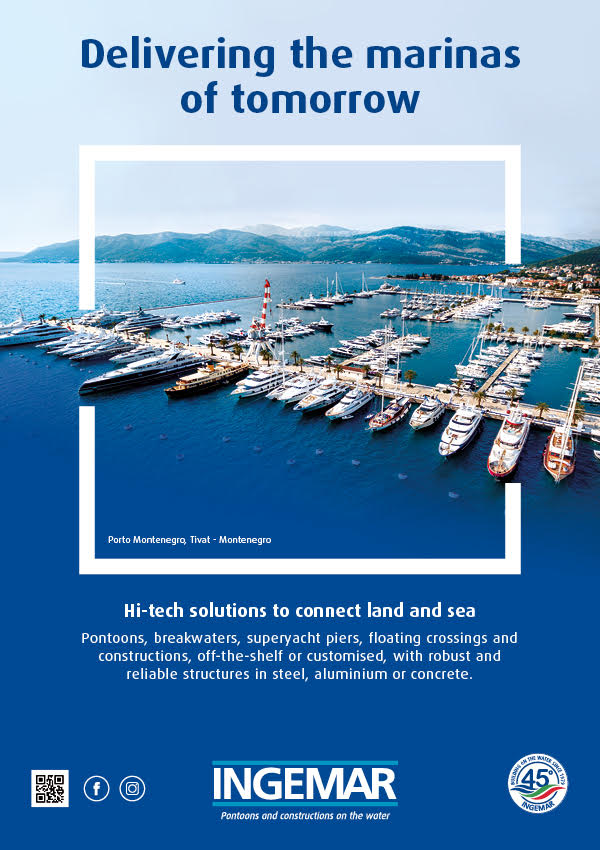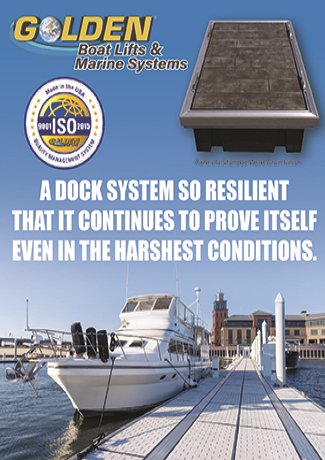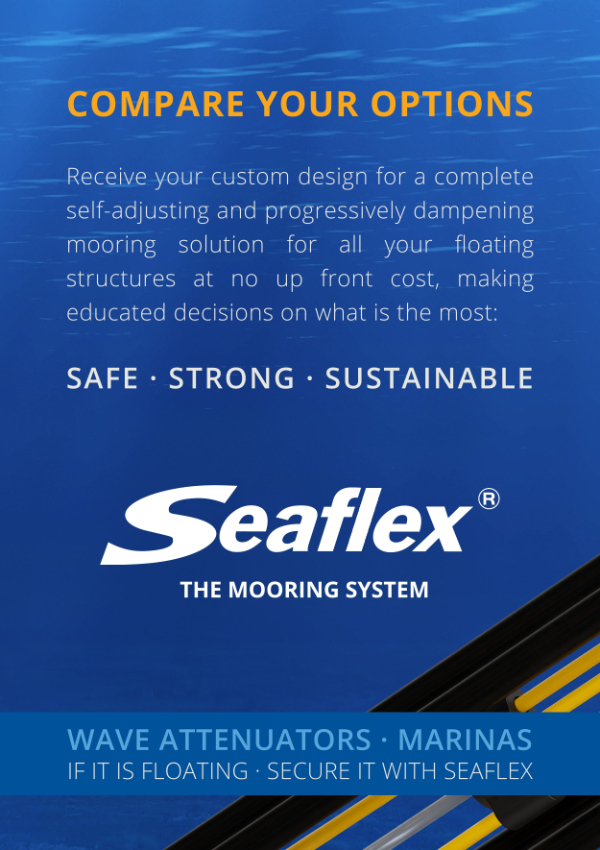Exploring megayacht tourism in Anguilla
by Gregory Weykamp
Anguilla, the northernmost of the Leeward Islands along the eastern edge of the Caribbean, is a beautiful island nation of just 15,000 residents. Known for its quiet and peaceful beaches, friendly locals, and a distinct lack of American style franchise chains that clutter so many other Caribbean islands, Anguilla has made a conscious effort to focus its efforts on protecting the authentic character of the island by concentrating on serving a smaller number of tourists, but at a much higher level of service. Rather than compete for the mass market cruise ship industry, which could easily overwhelm the natural resources and culture of the island, Anguilla has set its sights on providing a new destination for the hundreds of super and mega yachts that cruise the Caribbean.
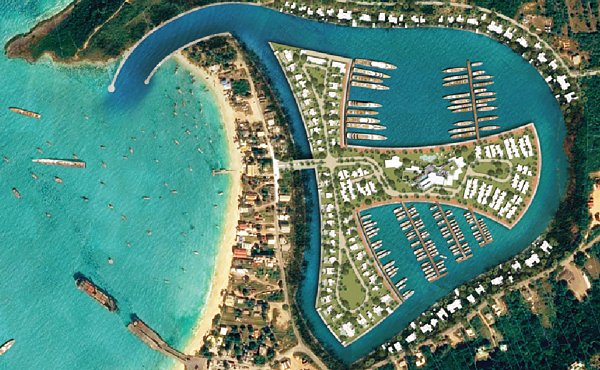
Plans for Sandy Ground, a narrow peninsula with a seafront beach, propose to transform a salt flat into a megayacht marina.
While there are many high end five star resorts on the island, previous attempts to date to create a marina capable of serving yachts in excess of 100m (328ft) have yet to succeed. In many cases, land ownership and entitlement process were difficult and hindered the opportunity for a project to move forward. In an effort to address those concerns, the Government of Anguilla recently commissioned Edgewater Resources, LLC to complete a megayacht feasibility study for the entire country, with the intent of documenting demand for megayacht facilities, identifying the best potential sites for megayacht marina development, and engaging local residents to establish plans that protect the character of Anguilla that attracts visitors, while building local support for the projects.
The obvious benefits of megayacht tourism for Anguilla include significant positive economic impacts for the overall economy, including direct and indirect job creation and related economic impact. These impacts are derived from yacht berthing, service, fuel, provisioning, maintenance and sales. The feasibility study also built broad support for development of megayacht marinas from the local community by considering less obvious positive impacts including educational partnerships to build capacity to service the megayacht industry, environmental restoration of marina sites and consideration of long term environmental risks such as a response to sea level rise. Lastly, the projects also provide a substantial real estate opportunity for waterfront single family home sites with boat houses, condominiums and hotels.
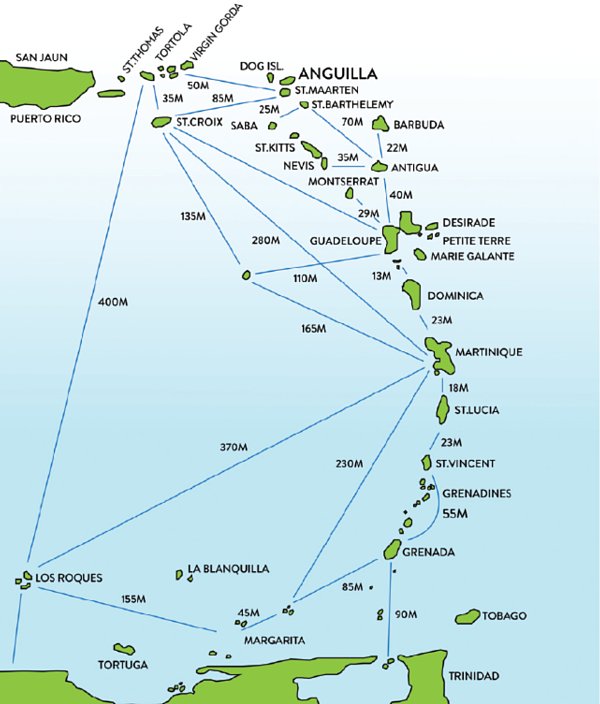
Megayacht migration in the Caribbean.
The feasibility study examined the entire coast of Anguilla to identify the best sites for marina development, considering a range of factors including physical features such as the water depth, wind and wave conditions, littoral drift and the presence or absence of sensitive habitat. Additional considerations included potential impacts on local neighbourhoods, such as displacement of residents and businesses, traffic and historic features. Upon completion of the evaluation, five sites were selected for both physical feasibility as well as offering a diversity of opportunities that would attract a wider range of developers. Concept plans were prepared and reviewed with the local communities in the areas near the proposed sites to build community support for the marina vision so future development activities can be completed efficiently.
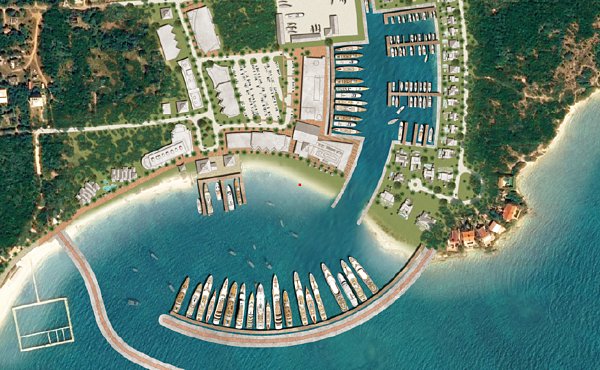
An historic port of entry for ferries arriving in Anguilla, Blowing Point’s ferry terminal was destroyed by Hurricane Irma. Plans are proposed to restore the building and create an inner basin marina.
Sandy Ground is a narrow peninsula with an ocean front beach on Road Bay to the west and a 43ha (106 acre) salt flat to the east. Just 150m (492ft) wide, Sandy Ground is home to some of the best local restaurants and beaches on Anguilla, as well as many historic homes, all of which are threatened by sea level rise. The concept master plan for this site proposes to transform the salt flat into a megayacht marina capable of supporting nearly 2,900m (9,514ft) of berthing for vessels in excess of 100m (328ft) in length.
The new marina will be nestled into the site and surrounded by a nature preserve for nesting terns and emergent wetland and upland vegetation. The maritime traditions of Anguilla will be preserved through a heritage centre that will share the traditional knowledge, cultural artifacts and history of the Sandy Ground site. Additional elements include high end resort and residential, as well as marina service facilities, all on new land created by dredging the salt flat to create adequate depths for navigation. The plan avoids displacing existing residences and businesses and will also provide for the use of the dredge materials to raise the Sandy Ground neighbourhood above anticipated sea level rise.
While the cost of preparing for sea level rise is significant, the proposed project provides both the source of materials needed to raise the elevation of the neighbourhood and the economic activity necessary to allow the Government of Anguilla to implement the plan. Similar improvements are proposed at Blowing Point, the historic port of entry for ferries arriving in Anguilla. The Blowing Point concept proposes to restore the historic ferry terminal that was destroyed by Hurricane Irma and greatly improve the arrival experience for visitors and residents of Anguilla by extending an existing breakwater reef, creating an internal basin marina with repair facilities, and enhancing waterfront shops, restaurants and hotels.
One of the key factors for the success of megayacht tourism in Anguilla is the recognition that, while it is important to build very high quality facilities to attract and support megayachts, what really separates Anguilla from other destinations in the minds of megayacht owners is the quality of the Anguilla experience. The authentic character of the island must be protected above all else, because in the end, it is the quiet beaches, the wildlife, the tiny restaurants on the beach, the local musicians and the local people that simply cannot be found anywhere else. The experience can’t be bought and imported by private jet. You must come to Anguilla for the experience, and with this in mind, the residents and visitors to Anguilla will all benefit.
Gregory J Weykamp, ASLA, LEED AP BD+C is president of Edgewater Resources, LLC, a waterfront development consultancy firm with offices in Michigan and Florida, USA. He has over 25 years of experience in planning and design with an emphasis on implementation of marinas, sustainable landscapes and urban waterfront environments.
E: gweykamp@edgewaterresources.com

